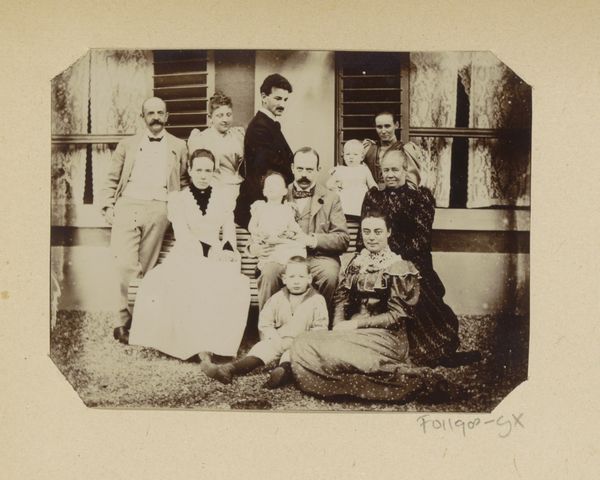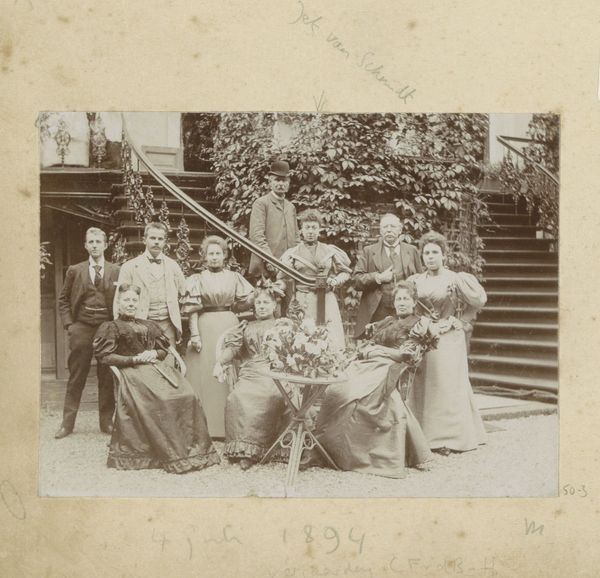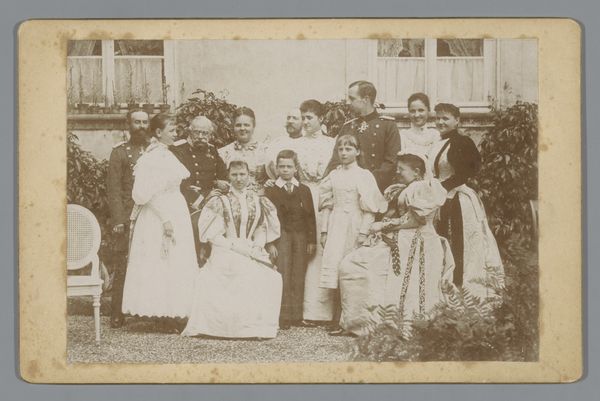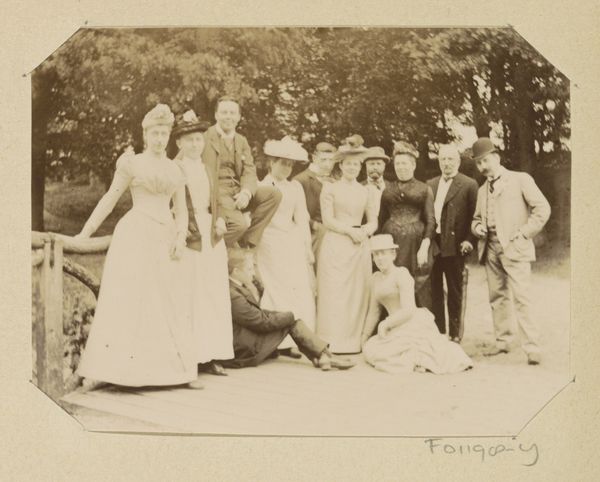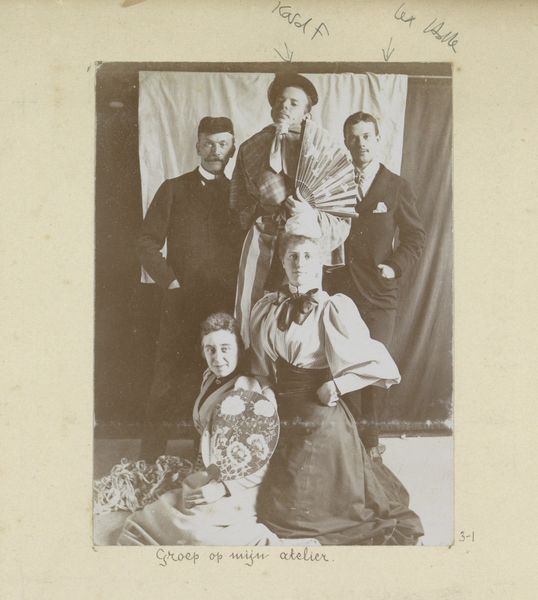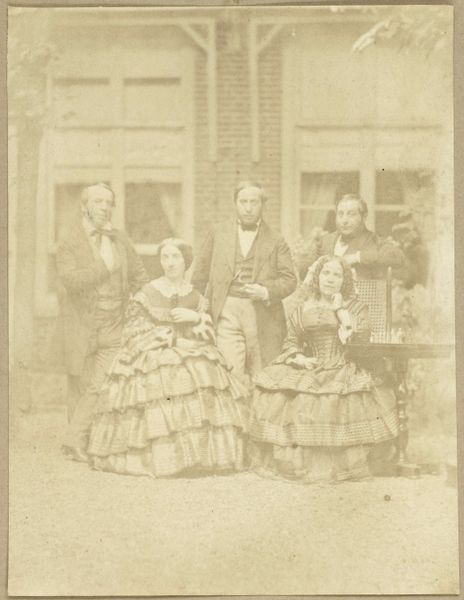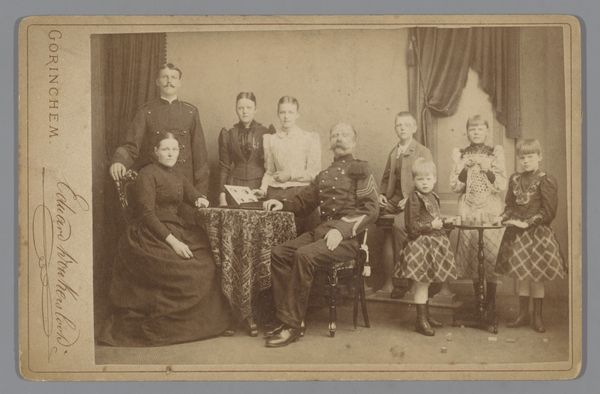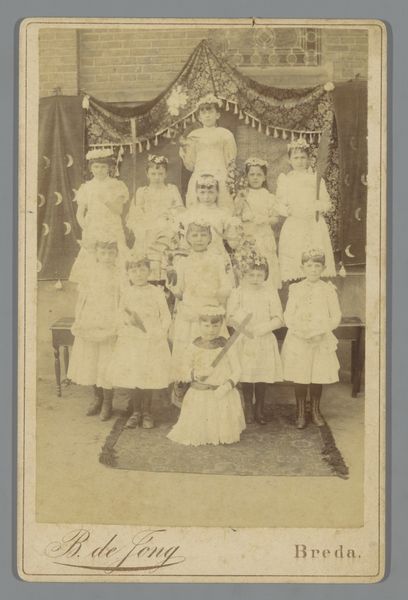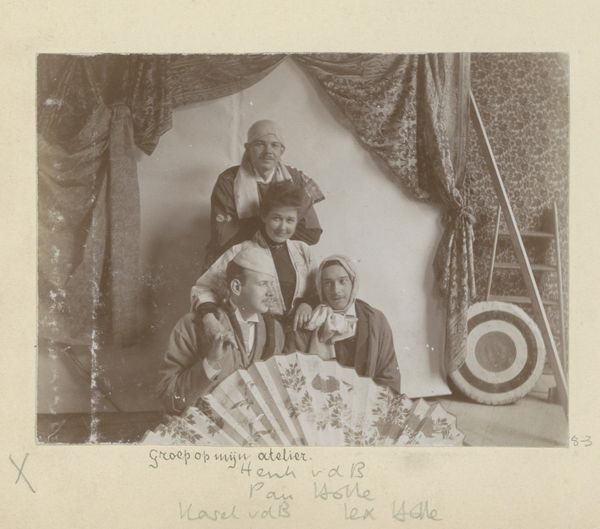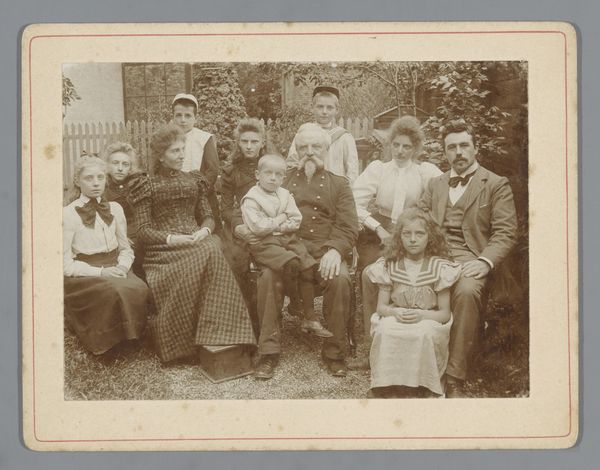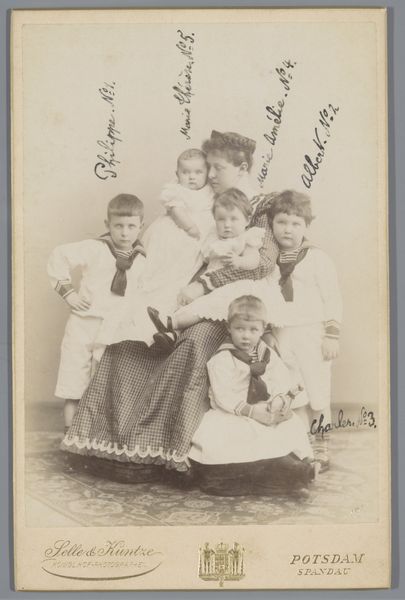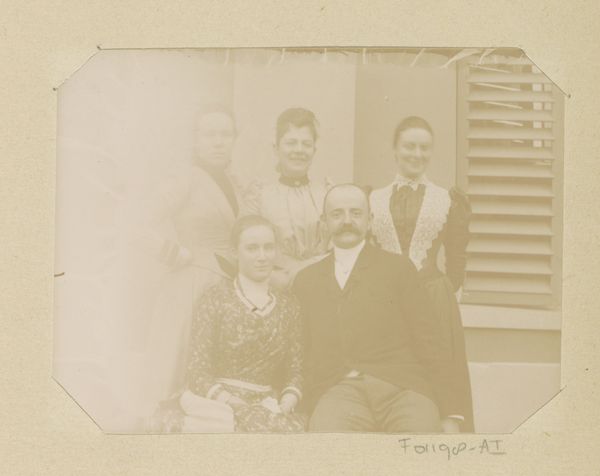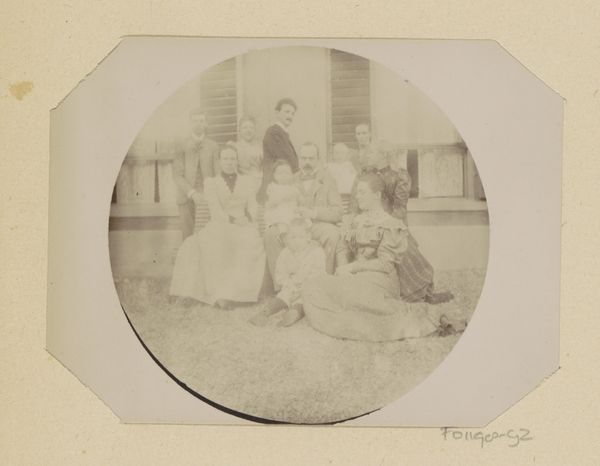
photography
#
portrait
#
photography
#
group-portraits
Dimensions: height 74 mm, width 99 mm
Copyright: Rijks Museum: Open Domain
Curator: Here we have an 1889 to 1893 photograph titled "Groepsportret van de familie Piek," which translates to "Group Portrait of the Piek Family." It's a fantastic example of group portraiture using photography. Editor: It's an interesting study in tonal range, almost entirely cream and sepia. You can practically feel the texture of the paper, but there’s a real formality here, almost like the very act of having their picture taken was an event. Curator: Absolutely. The composition places the sitters in a manner that emphasizes social roles. Notice how the presumed elders occupy the higher positions, a deliberate staging reflecting societal hierarchies of the time. Group portraiture like this served very clear social purposes, solidifying family bonds for both private remembrance and public projection of status. Editor: And look closely at the labor involved here. Photography was not instantaneous. There's such deliberation in each pose and expression. What I find fascinating is thinking about the materiality of early photography – the collodion process, the specific chemicals used. It all speaks to the very human labor required to capture an image back then, unlike our throwaway digital culture now. The Piek family, in effect, contracted someone, or visited a photographer's studio, in order to generate this image for themselves. Curator: That's right. The studio setting likely influenced the styling. Consider the carefully arranged clothing, the almost uniform expressions. What this photograph lacks in spontaneity, it gains in conveying a very particular self-image—one they wanted to preserve for posterity, circulated, likely displayed. Early photography occupied a peculiar space: somewhere between craft and mass communication, with studios offering these increasingly ubiquitous visual images that had formerly only been available as expensive painted portraits for the wealthy. Editor: Thinking of the production process gives a tangible element to an artform now we often take for granted. I mean, compare it to portrait paintings commissioned only a few decades before – where an artist’s hand directly mediates and represents its subject. Early photographic studios began a different kind of industrial art production. Curator: Well said. When viewed from a materialist angle it shows that the simple image really offers an entry into a whole history of early mechanical reproduction, the economics of running a photographic studio, even the evolution of photographic materials. Editor: Precisely. Looking closer reminds me not to take our own contemporary methods of documentation for granted, either.
Comments
No comments
Be the first to comment and join the conversation on the ultimate creative platform.
